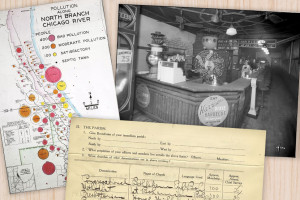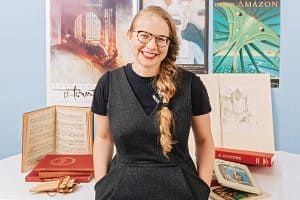
The American Philatelic Research Library (APRL) is a postage-lover’s treasure. Located in Bellefonte, Pennsylvania, in the central part of the state, the library serves the needs of members of the American Philatelic Society (APS), the largest association of stamp collectors in the world. Overseeing the 85,000-volume facility since 2010, APRL Librarian Tara Murray says the “most frequently consulted book is probably the Scott Catalogue, a six-volume set listing the postage stamps of the world. We also keep The American Philatelist, the monthly journal of the APS, handy—and we’re just as likely to be looking for an article published in the 1950s as one published in 2017.”
For the most part, APRL does not include stamps in its collection, “but they are occasionally included as collateral material. For example, the library owns two examples of the famous 1918 ‘Inverted Jenny’ error stamp, one of which was just recovered in June 2016 after being stolen from a stamp show in 1955. The first postage stamp wasn’t produced until 1840, but mail existed long before that, and the oldest item in our collection is a post route map of the American colonies from 1729.”
Murray says that starting the library’s blog was one of her first projects: “I use it to share news about philatelic literature and highlight the unusual items in our collection.” Stamp collecting is still popular, she says, and APRL has a well-used children’s area. “Even though most kids today aren’t regularly exposed to postage stamps, they’re still fascinated by them.”


